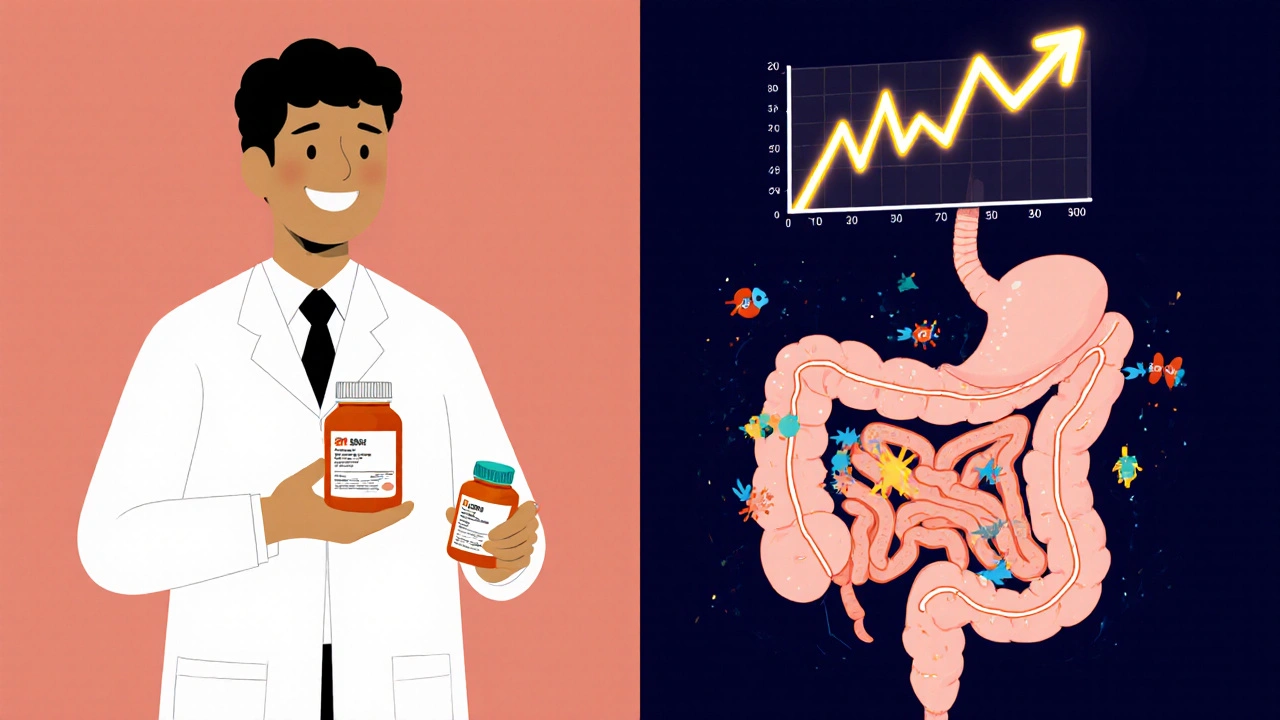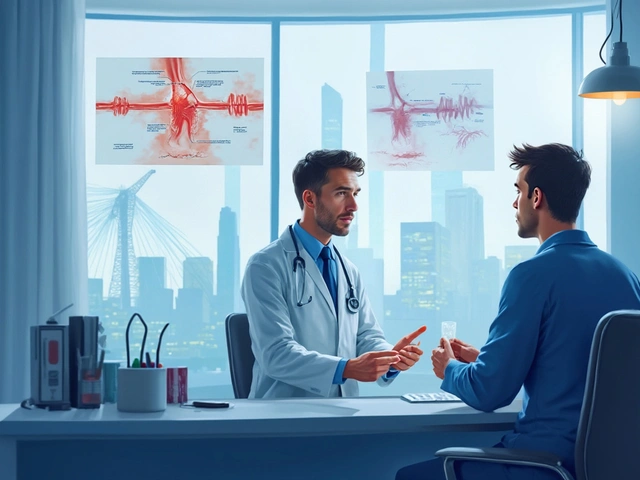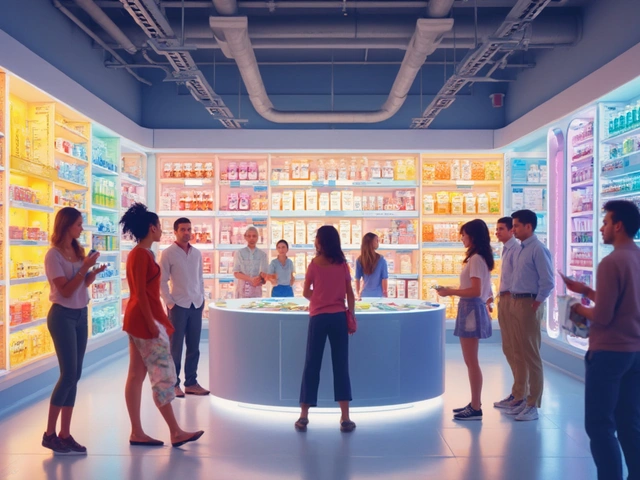You switched to the generic version of your blood pressure pill and now you feel off. Maybe it’s nausea, fatigue, or just a weird sense that something’s not right. You’re not imagining it. And you’re not alone. Thousands of people report feeling different after switching from a brand-name drug to its generic copy-even though the active ingredient is exactly the same. The truth? The difference isn’t in what the medicine does, but in what it’s made of.
What Are Inactive Ingredients?
Inactive ingredients, also called excipients, are the non-medicinal parts of a pill or capsule. They don’t treat your condition. But they do a lot of other important jobs: holding the tablet together, helping it dissolve at the right time, making it easier to swallow, or keeping it from going bad. Think of them like the scaffolding around a building. The building is the active drug-the part that fixes your problem. The scaffolding? That’s the filler, the coating, the dye, the binder. And while the building stays the same, the scaffolding can change.
Common inactive ingredients include lactose (a milk sugar), microcrystalline cellulose (ground wood pulp), corn starch, povidone, sodium starch glycolate, and dyes like FD&C Blue No. 1. Some pills even have aspartame (an artificial sweetener) or sulfites (a preservative). These are all approved by the FDA as safe. But “safe for most people” doesn’t mean “safe for everyone.”
Why Do Generics Feel Different?
The FDA requires generics to have the same active ingredient, strength, dosage form, and route of administration as the brand-name drug. That’s the law. But when it comes to inactive ingredients? They can be totally different. One company’s generic version of sertraline might use lactose as a filler. Another’s might use mannitol. One might use a red dye. Another might be white. One might have a slow-release coating made of hydroxypropyl methylcellulose. Another might use a different polymer.
These small changes can affect how fast the drug is absorbed, how it tastes, or even how your stomach reacts. For most people, it’s no big deal. But for some, even tiny differences matter.
Take levothyroxine, the drug used for hypothyroidism. The difference between an effective dose and a harmful one is razor-thin. A 2022 study from UMass Memorial Health found that 0.5% of patients switching generics had TSH levels that went out of range-enough to cause fatigue, weight gain, or heart palpitations. That’s rare, but it happens. And when it does, it’s often because the inactive ingredients changed how the tablet dissolved in the gut.
Same goes for warfarin, digoxin, and some seizure meds. These are drugs with a narrow therapeutic index. That means the margin between working and causing harm is small. Even a 5% change in absorption can tip the balance.
Who’s Most Likely to Notice a Difference?
You’re more likely to feel a difference if:
- You have a known allergy or intolerance to an excipient-like lactose intolerance (affects about 36% of Americans), gluten sensitivity, or sulfite sensitivity (3-10% of asthmatics).
- You’re taking a medication with a narrow therapeutic index (thyroid meds, blood thinners, heart meds).
- You’ve been on the same brand-name drug for years and your body is used to its exact formulation.
- You’re sensitive to dyes, preservatives, or artificial sweeteners.
A 2021 study in JAMA Internal Medicine looked at 2,000 patients who switched from brand-name to generic drugs. Only 1% had to switch back because of side effects. But among those 1%, the top culprits were lactose (12%), artificial dyes (8%), and sulfites (5%).
One Reddit user wrote: “Switched to generic sertraline and got stomach cramps every day. Went back to brand-gone in two days.” Another: “My generic Synthroid made me feel like I was drowning in fatigue. My doctor checked my TSH-it was way off. Had to go back to brand.”

Are Generics Safe?
Yes. For 94-95% of people, generics work just as well as brand-name drugs. The FDA’s bioequivalence rules require that the generic delivers the same amount of active ingredient into your bloodstream within a very tight range-80% to 125% of the brand-name version. That’s a 45% range, but in practice, most generics are within 3-5% of the original. That’s not a problem for most drugs.
And the cost difference? Huge. Lipitor (atorvastatin) cost $370 a month as a brand. The generic? $4. Lisinopril for high blood pressure? $15 for 30 brand-name pills. $2 for 30 generics. That’s not a minor savings-it’s life-changing for people on fixed incomes.
Generics make up 90% of all prescriptions filled in the U.S. But they only cost 23% of the total. That’s how much money they save the system. And the FDA has approved over 15,000 generic drugs as of 2023. Most of them work perfectly.
What Should You Do If You Think the Generic Isn’t Working?
If you feel worse after switching, don’t just assume it’s in your head. Don’t stop taking it without talking to your doctor. But do take action.
- Check the label. Look at the list of inactive ingredients on the bottle. Compare it to your old brand-name bottle. Are there new fillers? New dyes? Lactose? Aspartame?
- Keep a journal. For two to four weeks, write down how you feel each day. Note any new symptoms: nausea, headaches, fatigue, anxiety, skin rashes.
- Talk to your pharmacist. Pharmacists can look up the exact formulation of your generic and tell you what’s changed. They can also check if there’s a different generic version available with a different excipient profile.
- Ask your doctor. If symptoms persist, your doctor can request the brand-name drug on your prescription. Some insurers require prior authorization, but they often approve it if you have documented side effects.
There’s also something called an “authorized generic.” That’s when the brand-name company makes its own generic version. Same active ingredient. Same inactive ingredients. Just cheaper. These make up about 15% of the generic market. Ask your pharmacist if one exists for your drug.

What’s Changing in the Future?
The FDA is starting to take inactive ingredients more seriously. In 2023, they issued new draft guidance for generics of high-risk drugs like levothyroxine and warfarin, requiring tighter bioequivalence testing. They’re also expanding their Inactive Ingredient Database, which will let you look up exactly what’s in every approved drug by 2024.
And the industry is responding. More companies are offering “clean label” generics-no dyes, no lactose, no artificial sweeteners. By 2025, 70% of generic manufacturers plan to offer allergen-free versions of common medications.
The goal isn’t to stop generics. It’s to make them safer for everyone-including the people who react to the scaffolding, not the building.
Bottom Line
Generics save money. They work for most people. But they’re not all identical. If you feel different after switching, it’s not just in your head. It could be the filler, the dye, or the coating. Don’t ignore it. Check the label. Talk to your pharmacist. Keep track of your symptoms. And if something’s off, ask for the brand-or a different generic. Your body knows when something’s changed. Listen to it.
Why do generic drugs look different from brand-name ones?
Generic drugs must look different from brand-name versions because of trademark laws. Even if they contain the same active ingredient, the color, shape, size, and markings on the pill are changed so they can’t be confused with the original. This has nothing to do with effectiveness-it’s just a legal requirement.
Can inactive ingredients cause side effects?
Yes. While inactive ingredients are generally safe, some people have allergies or sensitivities to them. Lactose can cause bloating and diarrhea in those who are intolerant. Dyes like FD&C Red No. 40 can trigger headaches or rashes in sensitive individuals. Sulfites can cause breathing problems in asthmatics. These reactions are rare but real.
Are all generic versions of the same drug the same?
No. Different manufacturers use different inactive ingredients. Two generic versions of the same drug, made by different companies, can have completely different fillers, binders, or coatings. That’s why switching between generics-even when they’re both labeled the same-can sometimes cause side effects.
Should I avoid generics because of this?
No. For 95% of people, generics work just as well and are completely safe. The cost savings are massive. Only avoid them if you’ve personally experienced side effects after switching, or if you have a known allergy to a specific excipient. For most, the benefits far outweigh the risks.
How do I find out what’s in my generic medication?
Check the printed leaflet inside the pill bottle. It lists all active and inactive ingredients. You can also ask your pharmacist for the manufacturer’s product information sheet. The FDA’s Inactive Ingredient Database (coming in 2024) will also let you search by drug name and see all approved excipients.
Can my doctor prescribe the brand-name drug instead?
Yes. If you’ve documented side effects from a generic, your doctor can write “Dispense as Written” or “Do Not Substitute” on the prescription. Insurance may require prior authorization, but most will approve it if there’s a clear medical reason.




Henrik Stacke
November 23, 2025 AT 11:35My God, this is the most coherent explanation of generic drug variability I’ve ever read. I’ve been on levothyroxine for 12 years and switched generics three times-each time, my TSH drifted like a drunk sailor. I didn’t know it was the filler until I read this. The FDA’s new draft guidance? Long overdue. I’m printing this out and handing it to my endocrinologist tomorrow.
Dalton Adams
November 24, 2025 AT 07:28Let’s be real-this isn’t about excipients. It’s about placebo effect amplified by corporate greed. The brand-name companies spent billions marketing their ‘superior’ formulations. When people switch to generics, they *expect* to feel worse. That’s not pharmacology-that’s psychology. And if you’re sensitive to lactose? Get over it. There’s a reason it’s used: it’s cheap, stable, and non-reactive for 99.9% of the population.
Richard Wöhrl
November 25, 2025 AT 13:26Actually, Dalton, you’re oversimplifying. Bioequivalence isn’t just about absorption-it’s about dissolution kinetics. A tablet coated with HPMC vs. Eudragit can have different release profiles even if the AUC is within 80–125%. For narrow-therapeutic-index drugs like warfarin, that 5% difference in peak concentration can mean the difference between a clot and a hemorrhage. I’ve seen it in clinical practice. This isn’t placebo-it’s physics.
Jennifer Shannon
November 26, 2025 AT 14:01I’ve been on sertraline for eight years. First it was Zoloft, then a generic that made me feel like my brain was wrapped in wet wool. Then another generic that gave me migraines. Finally found one with no dyes and no lactose-same pill, different name, different life. I keep the old bottle as a reminder: your body remembers. It’s not ‘in your head.’ It’s in your gut, your nerves, your very cells. The system treats us like numbers. But we’re not numbers. We’re people who feel.
Lisa Lee
November 27, 2025 AT 11:29Why are we even having this conversation? In Canada, we don’t have this problem. Our generics are regulated tighter. You guys let Big Pharma play roulette with people’s health. This is why I don’t trust American medicine.
Manjistha Roy
November 27, 2025 AT 18:01As someone who’s lactose intolerant and on a beta-blocker, I switched generics last year and ended up in the ER with severe bloating and dizziness. The label didn’t even list lactose-pharmacist had to call the manufacturer. Please, everyone: read the small print. It’s not just a footnote. It’s your safety net.
Kezia Katherine Lewis
November 28, 2025 AT 04:31While the FDA’s bioequivalence standards are technically compliant, the regulatory framework remains fundamentally reactive rather than proactive. The absence of mandatory excipient harmonization across manufacturers introduces a latent variable into therapeutic outcomes that is neither statistically accounted for nor clinically monitored at scale. We need pharmacovigilance protocols that treat excipient variation as a pharmacodynamic variable-not an afterthought.
Karla Morales
November 29, 2025 AT 12:02OMG I JUST REALIZED MY GENERIC METFORMIN HAS RED DYE 😭 I’VE HAD SKIN RASHES FOR MONTHS AND THOUGHT IT WAS STRESS. I’M SWITCHING BACK TO BRAND. #ExcipientAwareness #PharmaConspiracy
Javier Rain
November 30, 2025 AT 02:34Look, I get it. You’re scared. But don’t throw the baby out with the bathwater. Generics saved my dad’s life-he couldn’t afford Lipitor. The generic worked fine. But if you’re one of the 1% who reacts? You’re not broken. The system is. Advocate for yourself. Ask for the authorized generic. Demand transparency. We need more of this conversation-not less.
Pramod Kumar
December 1, 2025 AT 07:13Back home in Kerala, we call these little pills ‘ghost pills’-same medicine, different soul. My aunt switched generics and started trembling. Turned out the new one had titanium dioxide-she’s allergic. She cried because she thought she was going crazy. We found a brand that used only starch and cellulose. She’s fine now. People need to know: your body is a temple. Don’t let a label fool you.
Charmaine Barcelon
December 1, 2025 AT 23:39Everyone’s overreacting. If you can’t handle a little lactose or dye, maybe you shouldn’t be on medication at all. This is why America is so weak. Just take the pill. Stop whining.
Olanrewaju Jeph
December 2, 2025 AT 23:26In Nigeria, we don’t have this luxury. We get whatever generic is cheapest and available. Some pills have no labeling at all. I wish I could tell my patients to check the ingredients-but they don’t even have access to the leaflet. This conversation is vital, but it’s a privilege. Let’s not forget that.
Suzan Wanjiru
December 4, 2025 AT 12:51Just check the bottle. If you feel weird switch back. Done. No need for journals or doctor visits unless it’s serious. Pharma is a mess but you can’t fix it by overthinking. Just swap pills and move on.
JD Mette
December 5, 2025 AT 09:05I’ve been on the same generic for years. Never had an issue. But I know people who did. It’s not about being right or wrong. It’s about listening. If someone says they feel different, believe them. That’s all.
Jennifer Skolney
December 6, 2025 AT 01:53My mom switched to a generic for her heart med and started having palpitations. We found out it had a different binder. Switched back. She’s fine now. Thank god we caught it. If you’re on a critical med, don’t take chances. Your life isn’t a cost-cutting experiment. 💪